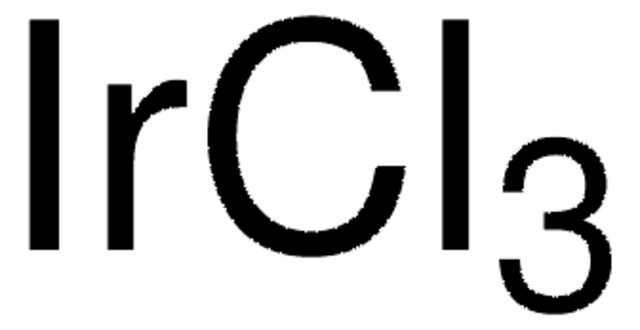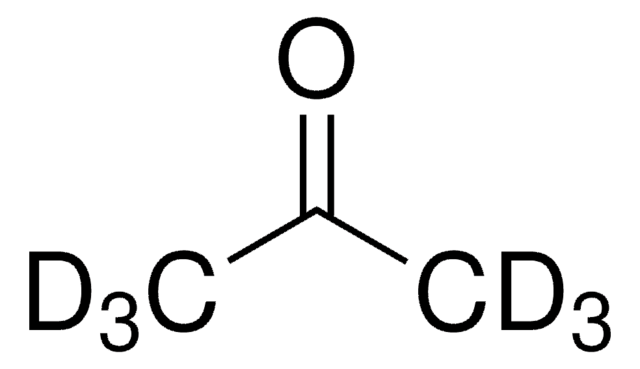209686
Iridium
powder, 99.9% trace metals basis
About This Item
Productos recomendados
assay
99.9% trace metals basis
form
powder
resistivity
4.71 μΩ-cm
bp
4130 °C (lit.)
mp
2450 °C (lit.)
density
22.65 g/cm3 (lit.)
SMILES string
[Ir]
InChI
1S/Ir
InChI key
GKOZUEZYRPOHIO-UHFFFAOYSA-N
¿Está buscando productos similares? Visita Guía de comparación de productos
Categorías relacionadas
General description
Application
- Iridium-based double perovskites for efficient water oxidation in acid media: This study highlights the development of iridium-based double perovskites that reduce iridium content while maintaining high activity and stability for water oxidation, significant for energy-related applications in material science (Diaz-Morales et al., 2016).
- Recent advances in understanding oxygen evolution reaction mechanisms over iridium oxide: This paper provides insights into the oxygen evolution reaction (OER) mechanisms on iridium oxide, crucial for improving catalytic processes in industrial applications (Naito et al., 2021).
- Iridium oxide fabrication and application: A review: A comprehensive review that discusses various methods for the fabrication of iridium oxides and their applications, particularly in sensors and catalysts, relevant to both drug discovery and material science (Chen et al., 2020).
signalword
Danger
hcodes
Hazard Classifications
Flam. Sol. 1
Storage Class
4.1B - Flammable solid hazardous materials
wgk_germany
nwg
flash_point_f
Not applicable
flash_point_c
Not applicable
ppe
Eyeshields, Gloves, type P3 (EN 143) respirator cartridges
Certificados de análisis (COA)
Busque Certificados de análisis (COA) introduciendo el número de lote del producto. Los números de lote se encuentran en la etiqueta del producto después de las palabras «Lot» o «Batch»
¿Ya tiene este producto?
Encuentre la documentación para los productos que ha comprado recientemente en la Biblioteca de documentos.
Los clientes también vieron
Nuestro equipo de científicos tiene experiencia en todas las áreas de investigación: Ciencias de la vida, Ciencia de los materiales, Síntesis química, Cromatografía, Analítica y muchas otras.
Póngase en contacto con el Servicio técnico











